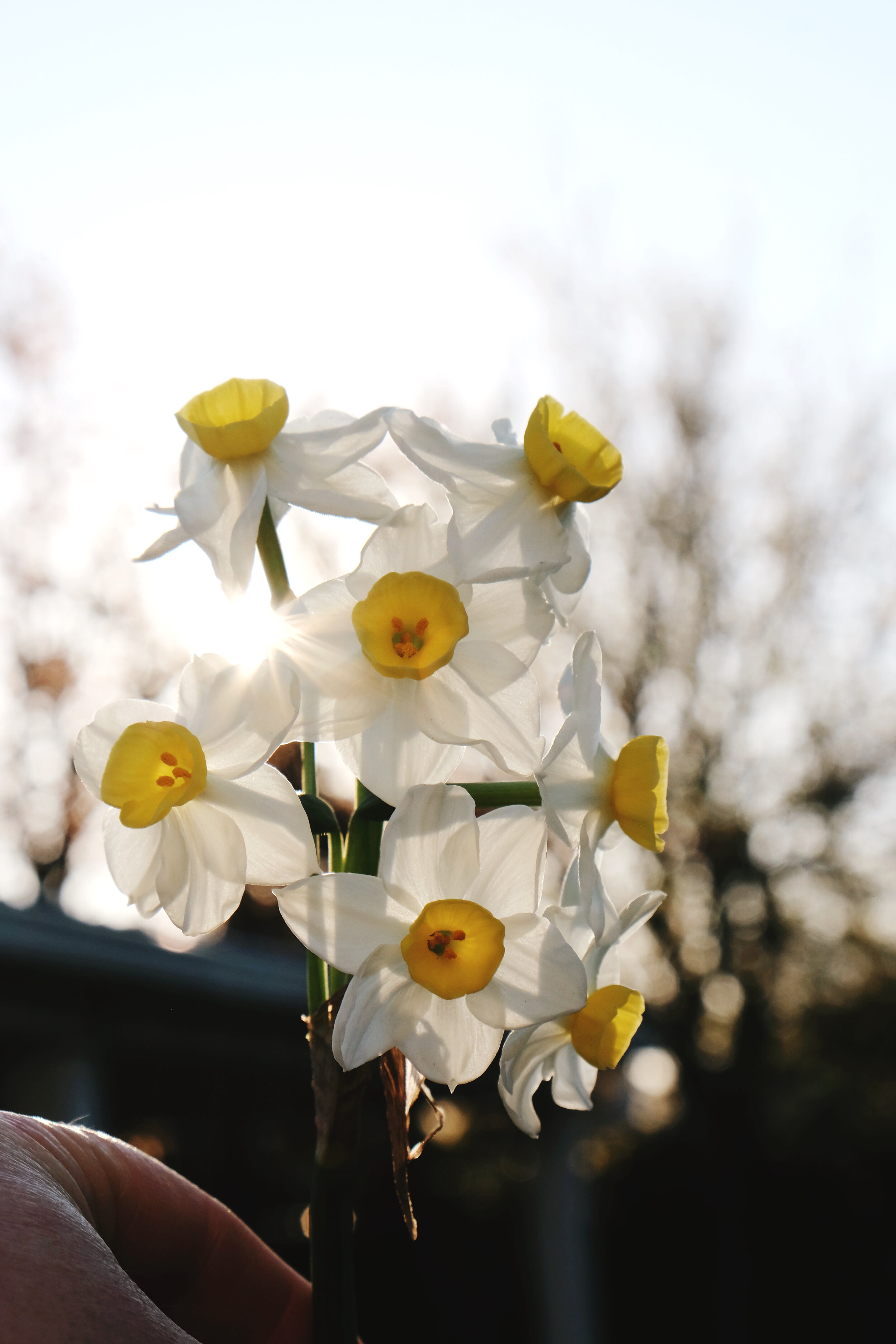Know your Narcissi
/Aside from daisies, I wonder if the daffodil might be one of the first plants we learn to name as a child. They are hard to miss in their classic, yellow-trumpeted form, and with little other competition as we creep out of winter, they never fail to catch our eye.
They arrive in charming gatherings, or a sprawling sea. Some varieties are deliciously ruffled, two-toned with peaches, pinks and intense tangerine notes. Some are virtually without scent, and others impossibly fragrant. Some have giant heads and others are small clustered creatures on straight stems, thriving in the sun just in time for your weary winter eyes.
They are a beginner gardener’s best friend, with most being eager, hardy and uncomplicated growers that love to multiply each season, easily transferring their cheer and promise into a bottle on the window sill.
Narcissus Grand Monarch - Division 8
But, as I’ve come to learn, daffodils are anything but simply defined. While it is completely accepted to broadly refer to anything vaguely “daffy” as a daffodil, for the passionate enthusiast, they provide a world of difference, in sometimes minuscule detail.
Let’s break them down in the least complicated terms as possible.
Daffodils and jonquils are spring- flowering perennial plants.
Daffodil is a broad name that tends to refer to the larger-headed, trumpety, frilly, strong-hued to pastel varieties of the genus narcissus, but encompasses all varieties.
Jonquil, a word that is often used as a substitute for daffodil, is more correctly applied to delicate varieties that have small-cupped, fragrant and clustered blooms of yellow or white flowers per stem. Their spears of foliage are slightly rounded, rather than sword-tipped.
To add to the mystery, all jonquils can be correctly referred to daffodils, but not all daffodils are jonquils. However, all daffodils and jonquils can be correctly referred to as narcissus/narcissi.
Still with me?
I have found too (as a relative beginner wading into this elaborate plant group), that you will often hear people using the term “narcissus” quite specifically. In common garden land, many use it to refer to the earlier flowering, fragrant and double-petaled, clustered varieties with smaller, pale heads.
Narcissus Ice Follies - Division 2
There are hundreds of species and more than 32,000 cultivars of daffodil that have been defined.
To try to identify and record them, the RHS (Royal Horticultural Society) created 13 daffodil divisions, with quite specific points of recognition such as how many flowers per stem and how the petals sit.
To add some complexity to the mix, there are often sub-divisions within each class.As a beginner, it's really far more than you need to know – but then again, understanding your favourite plants will only make them more appealing.
THE DAFFODIL DIVISIONS
Division 1: Trumpets: To qualify, they have to have 1 flower per stem and their cups must be longer than its petals.
Divisions 2: Large-cupped: Easily confused with trumpets, but with their cup being more than 1/3 (but not equal to) the length of their petals. 1 flower per stem.
Division 3: Small-cupped: Cups must be no more than 1/3 the length of their petals, with just 1 flower per stem.
Division 4: Doubles: Ruffled flower heads that produce one or more blooms per stem.
Division 5: Triandrus: Specify 2 -6 little blooms per stem, with petals slightly reflexed from the cup. They are often shorter in stature than their bigger cousins.
Division 6: Cyclamineus: These are those terrific, smaller daffodils which have just one flower per stem, but the petals flare sharply backwards from the cup.
Division 7: Jonquilla: Fragrant with 3 or more blooms per stem, commonly only in yellow or white. Their leaves are distinctly different to other daffodil varieties, being tube-like with rounded tips. This is the group that can be truly specified as jonquils if you want to get techy.
Division 8: Tazetta: Have a stout stem and clusters of 3 to 20 fragrant flowers. As a beginner, I find these can easily be confused with jonquilla.
Division 9: Poeticus Typically have white petals and cups with green/yellow centres, rimmed in red.
The remaining four divisions collect together wild forms and hybrids, split-cupped species and those specified only by their botanical names.
Narcissus Double Pam - Division 4
Narcissus Mount Hood - Division 1
Right now is the best time of year to scan around and witness the blooming of daffodils far and wide. Don’t be shy to ask others about variety names so that you can collect up a list for bulb orders next autumn. And maybe satisfy your learning by Googling which division these plants fall under.
In caring for your existing daffodil friends, you may already know that best practice is to leave foliage to die back naturally after flowering.
This can look messy, but resist the urge to cut, or even braid the leaves together, as the photosynthesis that occurs is vital to the bulb’s health going into its next flowering season. Wait until the leaves are yellow before cutting back.
Within this image are division 1 and division 8 daffodils
Daffodils are also a total delight to pick. Due to their very sappy stems, harvest, then place them in a vessel of water separately from other gathered stems to allow their sap to dispel and the cut to seal, before adding to an arrangement.
This will avoid them poisoning the vase water and reducing the life of the other flowers.
If the world of daffodils intrigues you, and you’re hungry for more, you will not only find a vast array of websites dedicated to the divisions, but also daffodil societies that are spread throughout the country.
To attend a daffodil show is truly something special.
This is an expanded version of the article featured in my Stuff ‘Homed’ gardening column for beginners , The Press, Dominion Post and other regional papers on September 11th 2021
All words and images are my own, taken in my home and garden in Christchurch, New Zealand unless otherwise captioned.







